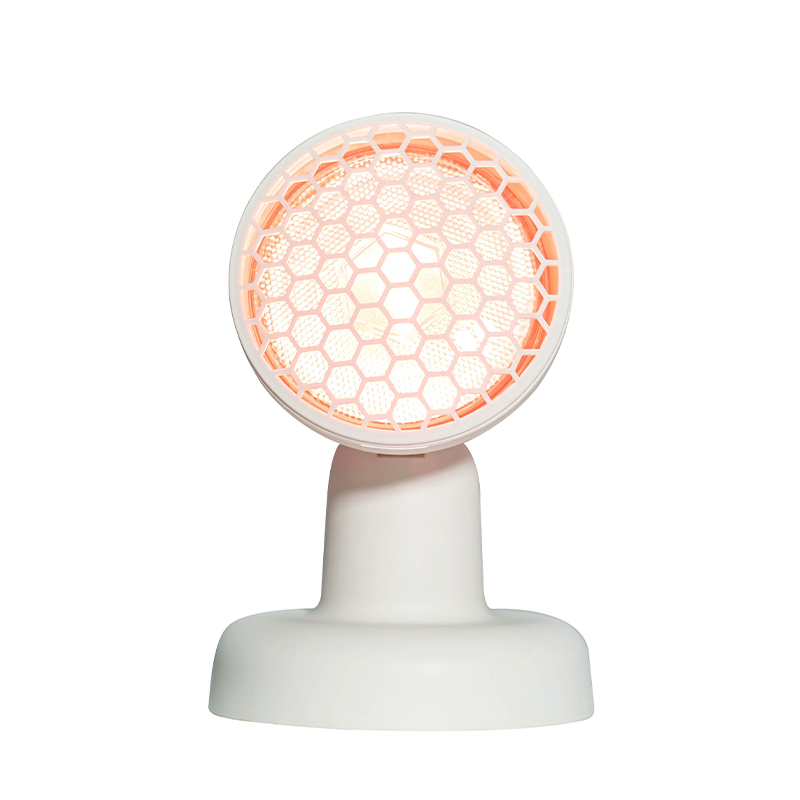 By Admin
By Admin
Content
Safe and effective infrared therapy lamps for muscle pain rely on specific wavelength bands that balance therapeutic penetration and safety. The optimal range is 700 nm-1400 nm (near-infrared, NIR), which penetrates 2-5 cm into soft tissues to stimulate blood circulation and reduce muscle inflammation without damaging skin cells. Longer wavelengths (1400 nm-3000 nm, mid-infrared) penetrate only 1-2 cm, making them suitable for superficial muscle pain but less effective for deep tissue relief. Short-wavelength infrared (700 nm-850 nm) offers the best combination of penetration and safety, as it avoids the skin-damaging risks of ultraviolet (UV) radiation (below 400 nm) and the overheating hazards of far-infrared (above 3000 nm). Wavelength consistency (tolerance ±5% of nominal value) is critical—unregulated wavelengths can cause skin burns or fail to deliver therapeutic benefits, so lamps must emit pure infrared without UV or visible light contamination.
Power output and irradiation distance are key parameters that prevent overheating while ensuring therapeutic efficacy. Safe power ranges for home and clinical use are 100-300 watts—low power (100-150W) for gentle, prolonged sessions (20-30 minutes) on sensitive areas (e.g., neck, shoulders), and medium power (150-300W) for deeper muscle pain (e.g., back, thighs) with shorter sessions (10-15 minutes). Irradiation distance must be calibrated to power: 30-40 cm for 100-150W lamps and 40-60 cm for 150-300W models, ensuring surface skin temperature remains ≤45°C (safe for prolonged exposure). Excessive power (above 300W) or insufficient distance (below 30 cm) increases the risk of thermal burns, while too much distance (above 60 cm) reduces therapeutic intensity. Additionally, adjustable power settings allow users to tailor treatment to pain severity, with gradual intensity increases (starting at 50% power) ideal for beginners or sensitive skin.

Ergonomic and safety-focused design elements are essential to prevent accidents and ensure comfortable, risk-free use. Built-in overheat protection (thermal cut-off switches) automatically shuts off the lamp if surface temperature exceeds 50°C, preventing burns. Timers (10-30 minute preset intervals with auto-shutoff) eliminate the risk of overexposure, a critical feature for users who may fall asleep during treatment. Adjustable lamp heads (360° rotation, 180° tilting) allow targeted irradiation of pain points without requiring awkward body positions, reducing strain during therapy. Non-slip bases and stable frames prevent tipping, while cool-touch handles enable safe repositioning during use. For added safety, lamps with diffused glass covers reduce glare and evenly distribute infrared radiation, avoiding hot spots on the skin that can cause localized burns.
Safe and effective use requires matching the lamp to specific pain types, body areas, and user conditions. For acute muscle strains (e.g., post-workout soreness), low-power (100-150W) near-infrared lamps with short sessions (10 minutes) reduce inflammation without aggravating tissue damage. Chronic pain (e.g., lower back pain, arthritis) benefits from medium-power (150-250W) lamps with longer sessions (15-20 minutes) to penetrate deep tissues and improve blood flow. Sensitive areas (e.g., elbows, knees) or elderly users require lower power and increased distance (50-60 cm) to avoid skin irritation. For large muscle groups (e.g., hamstrings, quadriceps), wide-beam lamps (irradiation angle ≥60°) ensure uniform coverage, while narrow-beam designs (≤30°) target small areas like the wrists or ankles. Additionally, portable, battery-operated lamps suit on-the-go pain relief (e.g., office, travel) with low power (≤150W) and safety locks to prevent accidental activation.
Infrared therapy lamps for muscle pain must comply with international safety and medical device standards to ensure reliability. Compliance with IEC 60335 (Household and Similar Electrical Appliances) ensures electrical safety, including insulation resistance (≥10 MΩ) and protection against electric shock. Medical device standards such as ISO 13485 (Quality Management Systems for Medical Devices) and FDA Class II certification (for clinical use) verify therapeutic efficacy and safety. UV emission limits (≤0.01 W/m² at 1m distance) comply with IEC 62471, preventing skin and eye damage. Temperature rise testing (EN 60335-2-27) ensures the lamp housing and irradiated surface remain within safe limits. Additionally, third-party testing includes biocompatibility assessments (ISO 10993) to confirm no harmful substances are emitted, and durability tests (≥5,000 operating hours) guarantee long-term safety. User instructions must include clear guidelines on power, distance, and session duration, along with contraindications (e.g., pregnancy, skin conditions) to prevent misuse.